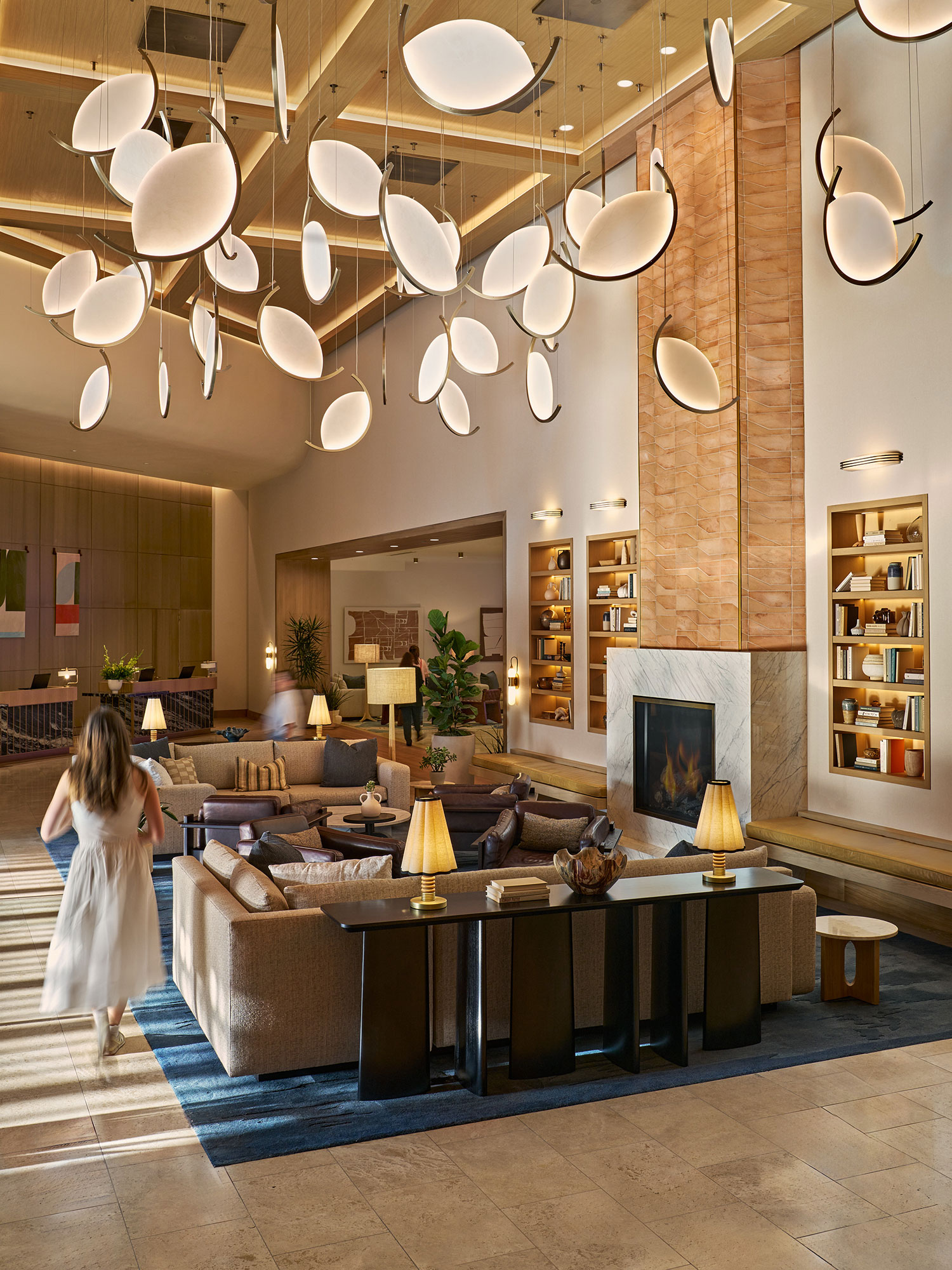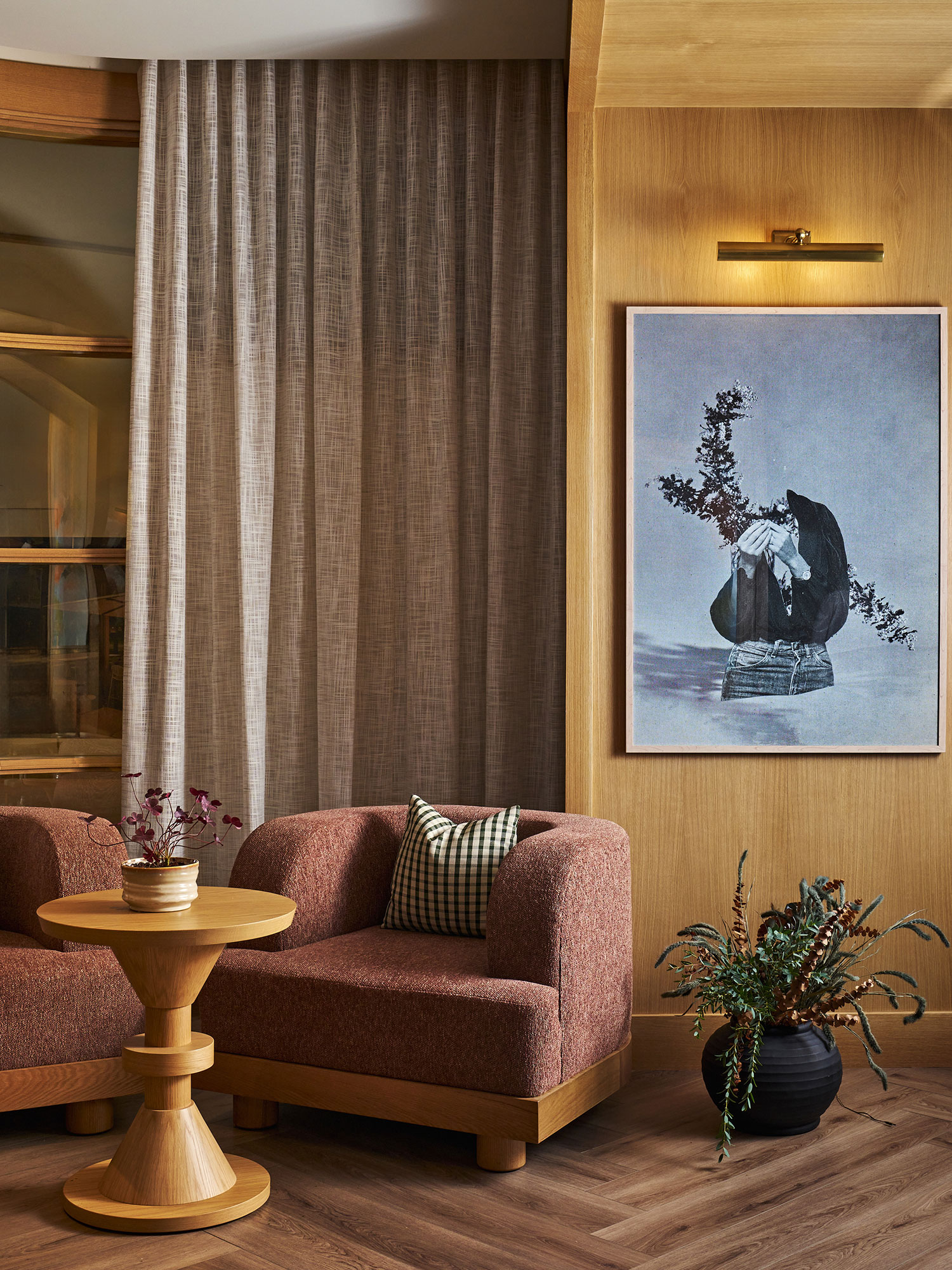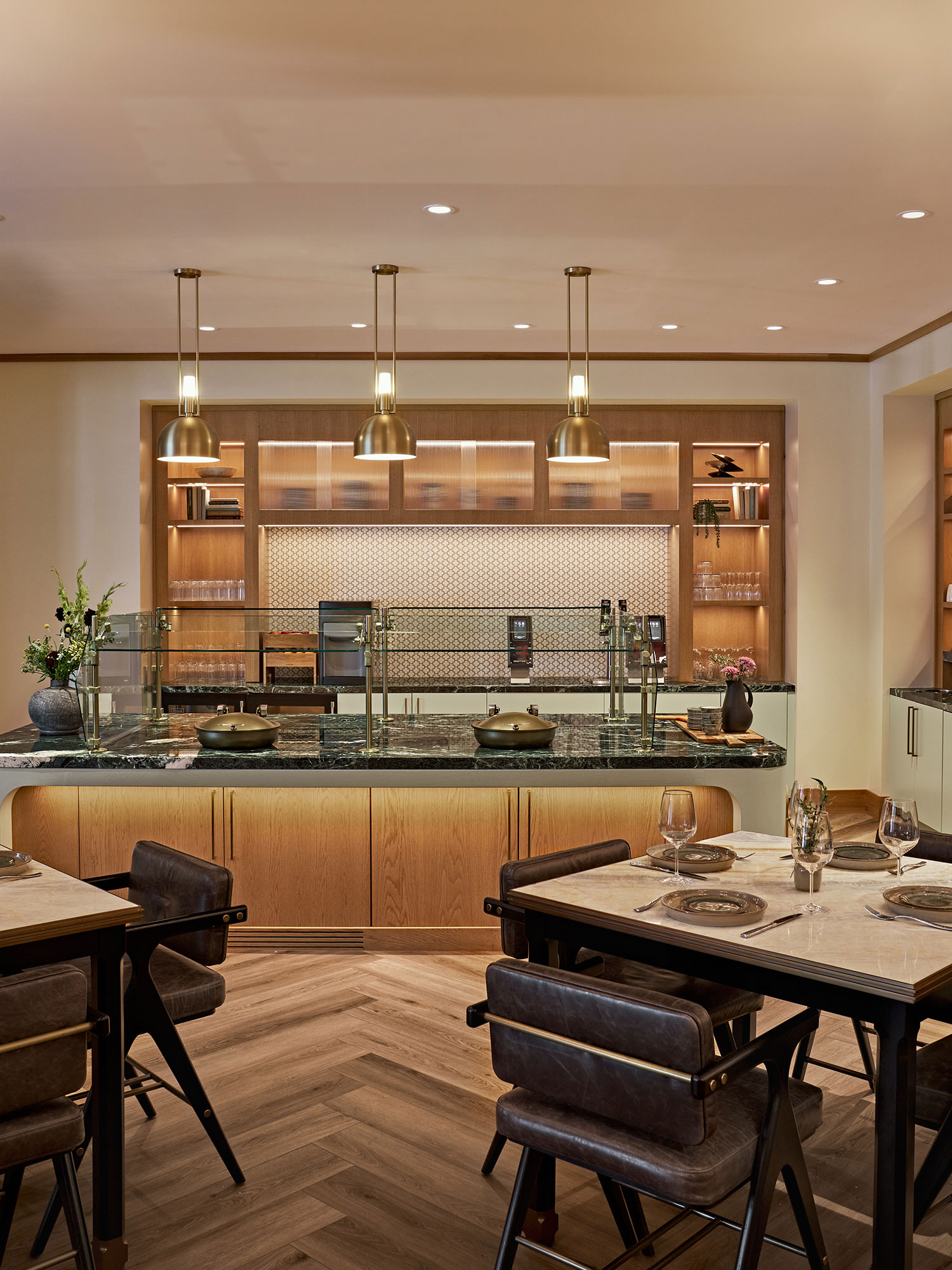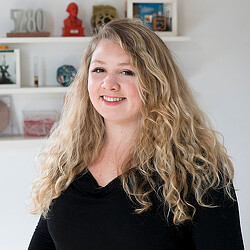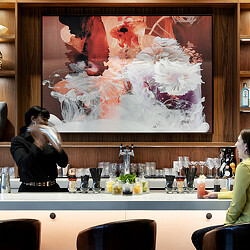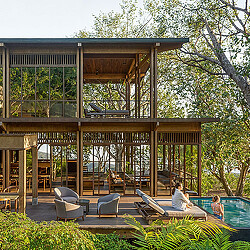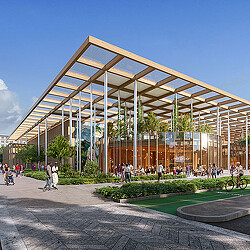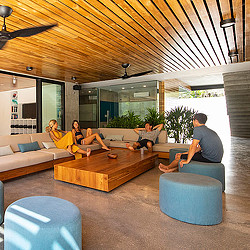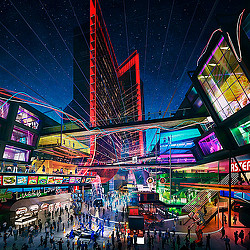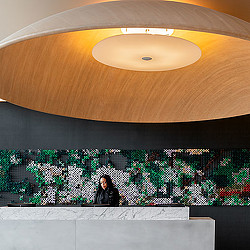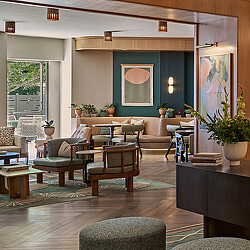A Story of Transformation:
Hyatt’s Unique Blend of Community
and Hospitality
Strategies for repositioning an aging hotel ground floor into a community destination.
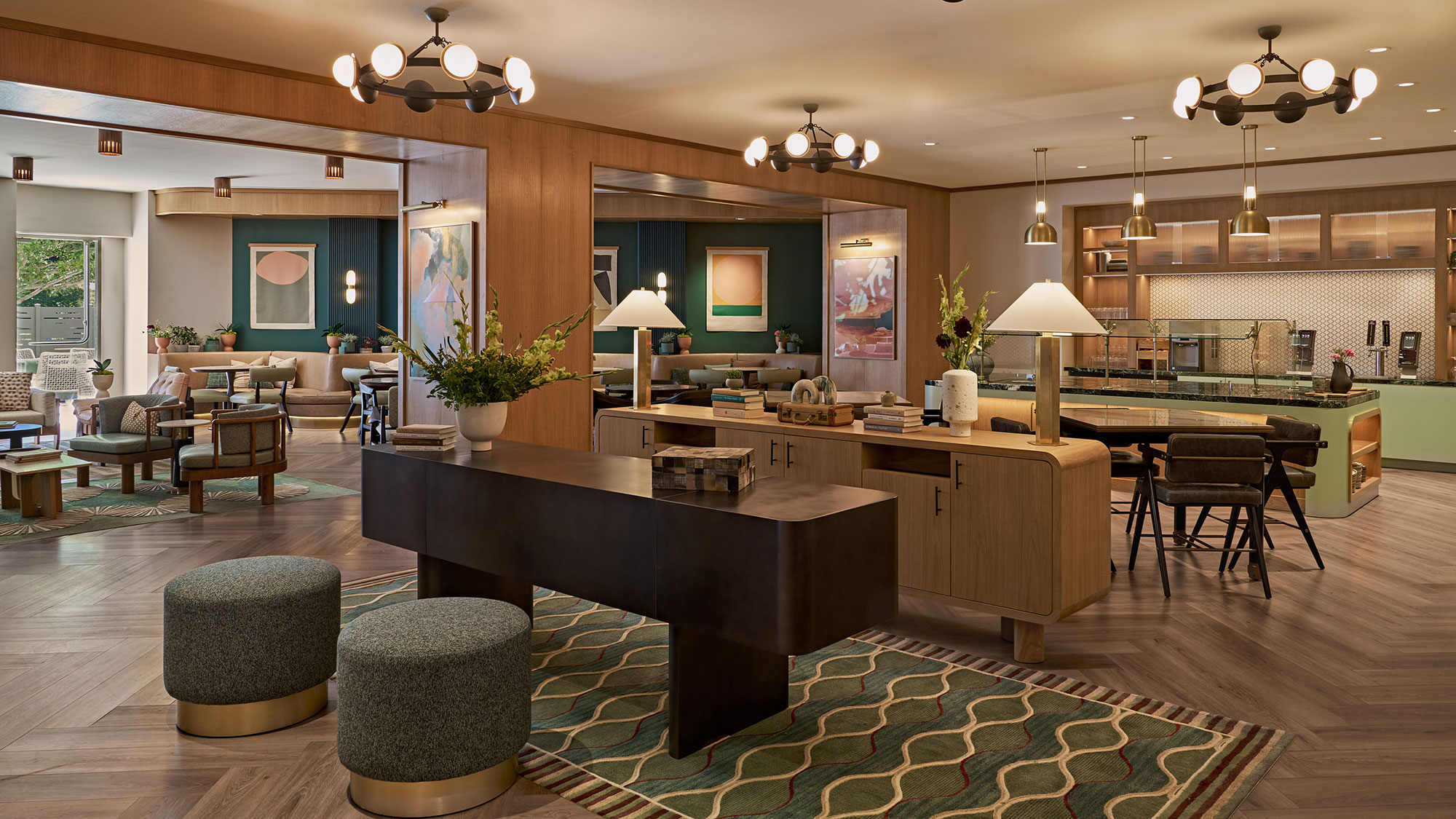
As travel patterns continue to evolve and the hospitality industry navigates recovery, hotel operators are faced with new challenges to adapt and maintain a competitive presence. In markets like Irvine, California — one of Orange County’s fastest growing cities — business and leisure travel are on the rise, presenting a unique opportunity for hotels to both immerse these visitors in their destination and expand their reach beyond guests.
Seeking to transform the former Hotel Irvine with the classic Hyatt Regency brand ethos, our client engaged us to create a property that maintained its elevated feel but was also distinctly linked to its setting. Its proximity to John Wayne Airport and several office parks made it a longstanding go-to for business travelers and local professionals, but it lacked a greater community connection. This drove our design of the site’s ground floor, envisioning it as a neighborhood anchor for residents and visitors alike.
Our hospitality research supports this approach, with 70% of respondents saying that the hotels they stay at should have some level of integration with their surroundings. This will require a shift in mentality for the hospitality industry, challenging the conventional role of hotels and who they serve.
Here are four strategies that were key for creating a unique sense of place for Hyatt Regency Irvine:
Reconnecting with Irvine
To design an environment that resonated beyond hotel guests, gaining a deep understanding of the site’s Westpark neighborhood and its residents was essential. In a prime downtown location sorely in need of activation, the design team began by evaluating the way Hotel Irvine, and hotels in general, are traditionally composed, along with analyzing the makeup of its community. These analyses informed a program and a choreographed space that serves as both an inviting after-hours and weekend space for locals while accounting for the needs of business and leisure travelers.
Designing to benefit those beyond occupants in an authentic way is an effective mechanism for drawing a broader range of visitors and creating a positive brand association.
Celebrating All Things Local
Armed with a better understanding of the local lifestyle — largely revolving around local businesses, the beach, family activities, and airport travel — we drew inspiration from the area’s carefree spirit and vibrant artisan community. The overarching aesthetic blends Southern California approachability with urban sophistication, embodying the essence of Irvine and offering moments of understated glamour.
To ensure residents were reflected and factored into the design, while also immersing travelers in the local culture of Westpark, we prioritized a celebration of local craft. The team sourced décor and accessories from nearby antique shops and artisans, with a significant percentage of the furniture, carpet, and lighting custom designed for this project, showcasing what makes the neighborhood, and city, so unique.
The city of Irvine’s contrast of nature and urbanity also influenced the project’s materiality. Combining warm neutrals like natural stone tiles, textured wood paneling, and cane with details like brass accents, rose marble, and plush leather underscores the elevated yet attainable design of the entire ground floor, steeping residents and travelers in their surroundings.
Through details big and small, amplifying the unique qualities of a given community will continue to help hotels expand their reach while supporting local arts and economies.
Designing Chameleon Spaces for Exclusive Inclusivity
Hotel amenities need to go beyond serving a single purpose for one set of users. To act as true community anchors, they must be adaptable and multifunctional. At Hyatt Regency Irvine, this idea manifested in a coworking lounge, designed as an around-the-clock destination that acts as anything guests (both local and visiting) need.
From a kids’ craft lounge to an after-hours event space to a workspace with private phone rooms, this versatile setting reflects Irvine’s diverse demographic encompassing young families, university students, and white-collar professionals, along with the increasing number of travelers visiting the city. Not included in the original programming, this out-of-the-box addition offers a standout moment for guests.
Thoughtfully planned and flexible amenities like these are increasingly critical in today’s new standard of hotels.
Creating Everyday V.I.P. Experiences
Often out of reach for many, we leaned into making V.I.P. offerings more affordable, realistic, and accessible. Aiming to be a place of choice for locals — and provide an all-in-one experience for hotel guests — we designed outdoor amenities to emulate those commonly found in resorts.
The Regency Club is a continuation of the multidimensional, multipurpose nature of all ground floor amenities. With the feel of a cozy, members-only space, it spills outdoors and features firepits, lounge areas, and restaurant-style dining, making it ideal for gathering, celebrating, or getting work done. We revamped the neighboring poolside to mirror this multifunctionality, featuring rentable cabanas, an outdoor bar, and a big screen; the result is an environment that is welcoming of all ages and ideal for “daycations” and “staycations.”
For sites in need of reactivation and broader appeal, including outdoor amenities that offer sought-after, attainable, full-scale experiences can shift traditional hotel expectations with the potential to draw repeat visitors.
Community as the Ultimate Differentiator
In our case, the strong connective thread of aspirational approachability across the ground floor has helped transform this unique property.
In a market that will only continue to become more competitive, it will be imperative for hotel operators to reevaluate the functionalities of their properties. Hyperlocality is a powerful means to counter the perception that hotels are only open to and designed for their guests. By encouraging broader community use — and ensuring locals are a focal point — hotels can drive greater brand loyalty and more consistent foot traffic while opening their doors to new visitors.
For media inquiries, email .
